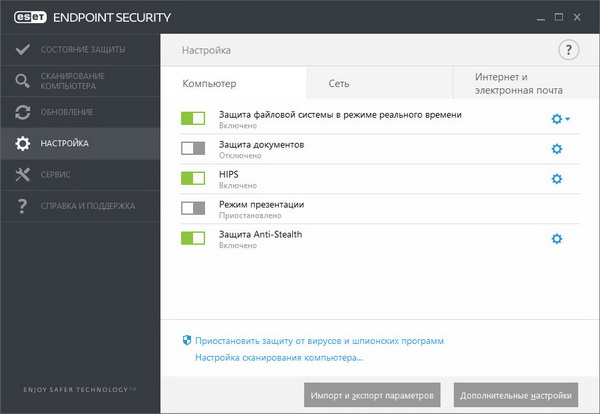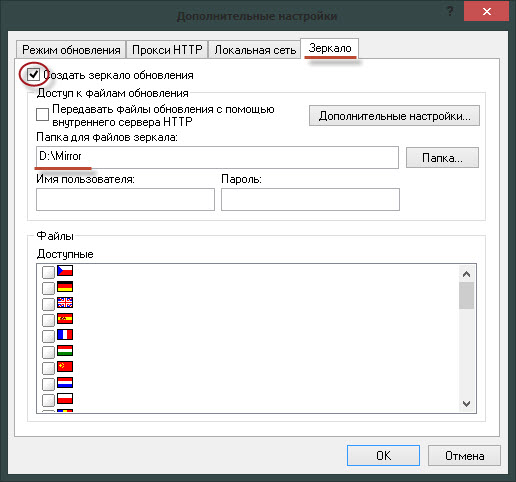
- #Eset endpoint security + file security repository install#
- #Eset endpoint security + file security repository update#
- #Eset endpoint security + file security repository Patch#
- #Eset endpoint security + file security repository password#
- #Eset endpoint security + file security repository download#
When downloading content for any platform, all of the selected platform's language-neutral vulnerability definitions are automatically updated by default.
#Eset endpoint security + file security repository Patch#
In other words, you don't need a unique language-specific patch to remediate those vulnerabilities because the patch covers all supported languages. Some vulnerability and other definition types are language-independent, meaning they are compatible with any language version of the OS or application.
#Eset endpoint security + file security repository update#
The more types you select, the longer the update will take.ĥ.Select the languages whose content you want to update for the types you've specified. You can select one or more types in the list depending on your Ivanti® Endpoint Security for Endpoint Manager content subscription.
#Eset endpoint security + file security repository download#
Open ESET Endpoint Security Advanced setup and click Update > Profiles > Updates.Ģ.Disengage Choose automatically next to Module updates and a new server to the Update server field using the \\UNC\PATH format.1.Click Tools > Security > Patch and Compliance.Ģ.Click the Download updates toolbar button.ģ.Select the update source site from the list of available content servers.Ĥ.Select the definition types whose security content you want to update. In case the computer is not in a domain, "IP_address_of_your_server\user" or "hostname\user" should be used.Īfter the Mirror configuration is complete, on client workstations set \\UNC\PATH as the update server using the steps below:ġ. In case the computer is in a domain, "domain\user" username should be used. To access the mirror folder, this needs to be done under the same account as the one used for logging into the computer the mirror is created on. This is the same setting used for updating, as described in the Connect to LAN as section. To enter authentication data, open ESET Endpoint Security Advanced setup (F5) and click Update > Profiles > Updates > Connection options > Windows shares > Connect to LAN as. If the shared folder is located on another computer in the network, you must enter authentication data to access the other computer.
#Eset endpoint security + file security repository install#
This option is enabled by default in the program install package. Next, configure access to the Mirror in Advanced setup > Update > Profiles > Update mirror tab by disabling Enable HTTP server. When creating the folder for the Mirror, you must provide “write” access for the user who will save update files to the folder and “read” access for all users who will update ESET Endpoint Security from the Mirror folder. (if SSL is used) Accessing the Mirror via system sharesįirst, a shared folder should be created on a local or network device.

#Eset endpoint security + file security repository password#
The default setting is None, which grants access to the update files with no need for authentication.Īn error Invalid Username and/or Password will appear in the Update pane from the main menu after several unsuccessful attempts to update the detection engine from the Mirror. For authentication, the user created on the workstation sharing the update files is used. The NTLM option provides encoding using a safe encoding method. Select Basic to use base64 encoding with basic username and password authentication. The following options are available: None, Basic, and NTLM. The Authentication option defines the method of authentication used for accessing the update files.

By default, the Server port is set to 2221. In the HTTP Server section of the Mirror tab you can specify the Server port where the HTTP server will listen as well as the type of Authentication used by the HTTP server. To allow access to the Mirror using the HTTP server, navigate to Advanced setup > Update > Profiles > Update mirror and select Create update mirror.


This is the default configuration specified in the predefined program configuration. Accessing the Mirror using an internal HTTP server The folder with update files can be presented as a shared network folder or as an HTTP server. There are two basic methods to configure a Mirror, which is essentially a repository where clients can download update files.


 0 kommentar(er)
0 kommentar(er)
